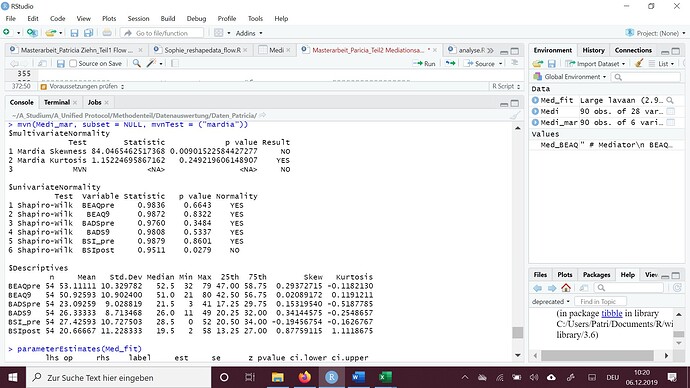Hi RStudio Community!
I want to do a Mardia Test for Multivariate Normality to check the prerequesites for a path analysis. With that, I want to see if there is an indirect (mediated) effect (X->M->Y). It is a psychological study, where we have a treatment and a waitlist group and want to see if the treatment group improves more BECAUSE the treatment affects a certain coping skill wich in turn affects symptom severity. We assess all variables with questionnaires at 2 different time points (pre and week 9 or pre and post).
Three questions:
-
We have between about 20 and 90 measurements for every questionnaire/timepoint combination. In the Output for Shapiro-Wilks test there is the same n every time though. That seems weird. Does anyone have an explanation for why this might be the case? Missings are defined as NA.
-
Is it normal for the mardia test result to show "NA" if skewness or curtosis is not normal? (see screenshot)
-
This occured to me after I did the Test: If it is a two group design with a wait list condition, it seems logical that I should test for multivariate normality in each group separately, doesn't it? After all, one would expect the week 9/post measures of the variables from the treatment group to be better than the ones in the wait list condition. So the curve would have two peeks and not be normally distributed. What do you think? Should I create two subsets with participants that are in the treatment or wait list group and do the analysis separately?
Any help would be very much appreciated!!!![]()
